Solving News: Andrey Selivanov tops the International Solving Contest in Fujairah with a perfect score!
In what was a striking case of experience trumping youth, 56-year-old Andrey Selivanov of Russia topped the leaderboard of the 20th International Solving Contest (ISC) here in Fujairah, besting his young compatriots, including the reigning World Champion in solving, Danila Pavlov, and the 17-year-old wunderkind and star in the making, Ural Khasanov. Andrey, who holds Grandmaster titles both in solving and composing, scored a perfect 60 out of 60 to dominate the rest of the field, while Danila and Ural finished second and third, respectively. We bring you detailed coverage of the event and break down four of the twelve problems posed to give you a taste of what solving at the highest level feels like. Read on.
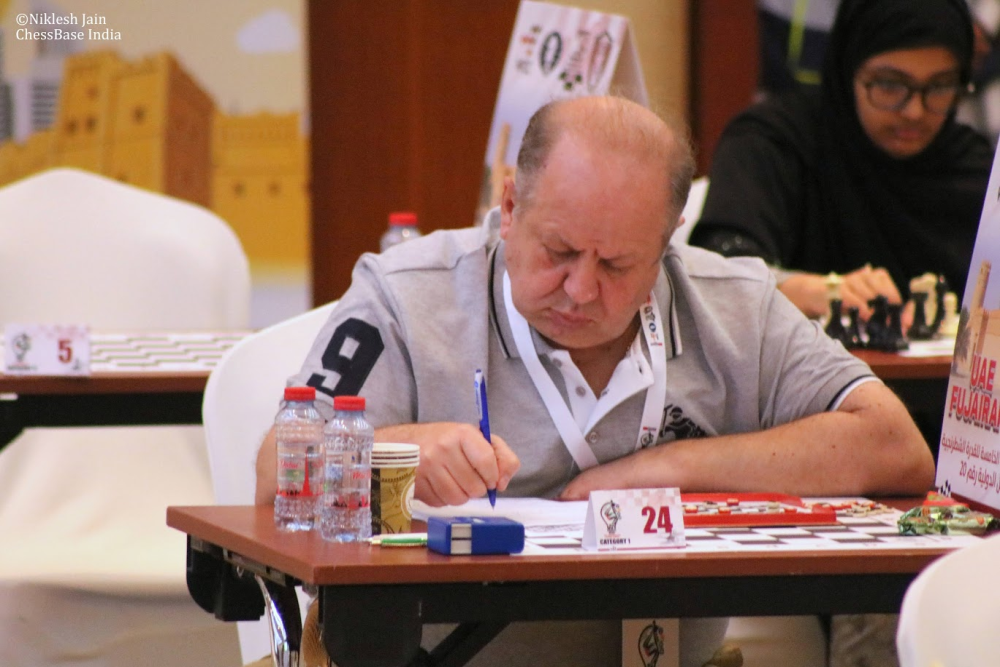
He may be a veteran, but he is no stranger to performing at the highest level of chess solving. In 2003, in Moscow, Andrey Selivanov won the individual World Chess Solving Championship (WCSC), becoming only the second Russian to be the World Champion in chess solving after Georgy Evseev. Moreover, Andrey is not just a solver. He has also authored hundreds of chess compositions across varied genres and is among a handful of problemists in history who could secure the coveted Grandmaster title in solving as well as composing. When you put these details in context, the Russian's latest triumph at the 20th International Solving Contest in Fujairah comes across as less of a surprise, but that is until you see the rest of the line-up!
As we reported in a previous article, the Fujairah Chess Club and Culture, in collaboration with the World Federation for Chess Composition (WFCC), established a historic prize fund of 74,000 AED (approximately 20,149 US dollars) for the 20th International Solving Contest in Fujairah this year. Unsurprisingly, this proved incentive enough to attract some of the best solvers to Fujairah. Indeed, the field boasted half the world's ten highest-rated solvers: the young phenoms Danila Pavlov and Ural Khasanov and the seasoned Kacper Piorun, Piotr Murdzia, and Aleksey Popov. However, only Andrey Selivanov, currently nowhere near the world's top ten, managed the stupendous 60 out of 60. Rated just 2367, Andrey performed way above his rating.
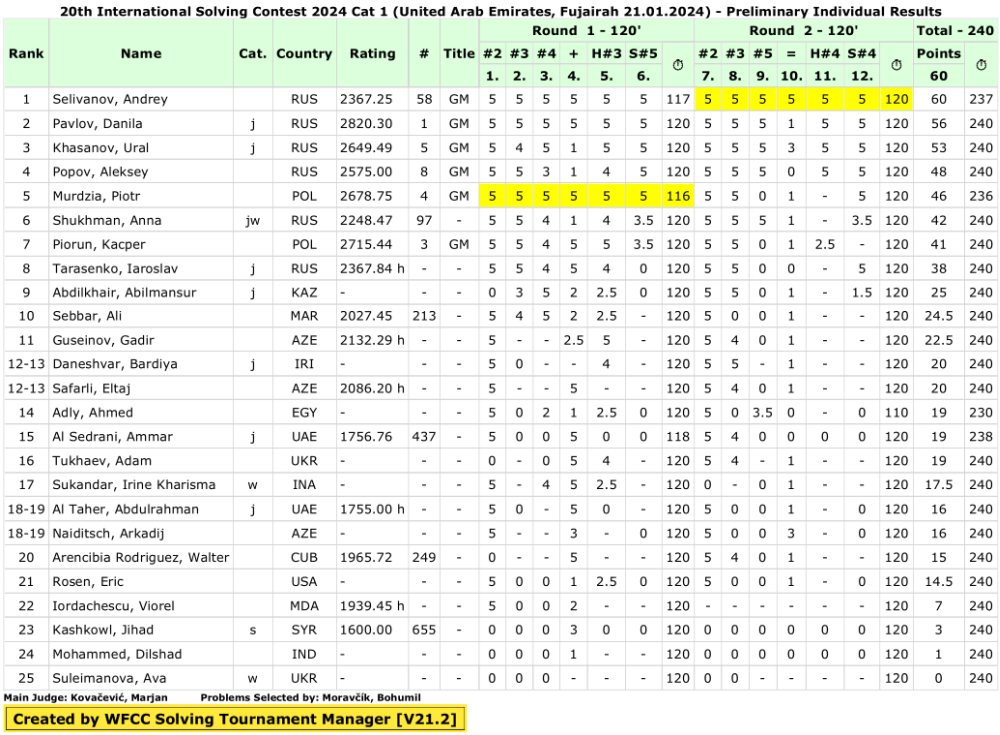
The problems were tricky enough to cause some difficulty for all except seemingly Andrey, who even turned in his first-round solutions three minutes before the allotted 120-minute time limit. As the table above reveals, barring the topper, everyone slipped up in the endgame study in round 2. Also, most solvers foundered in the help- and the selfmates. Danila and Ural finished second and third with 56 and 53 points out of 60, respectively; Aleksey Popov, yet another Russian, took the fourth place with 48 points, while a whisker away, with 46 points, the eight-time World Solving Champion Piotr Murdzia from Poland secured fifth place. Kacper Piorun, the other notable Pole in the line-up, slipped to the seventh place, surprisingly bested by the 14-year-old Anna Shukhman, currently the world no. 1 among woman in solving.
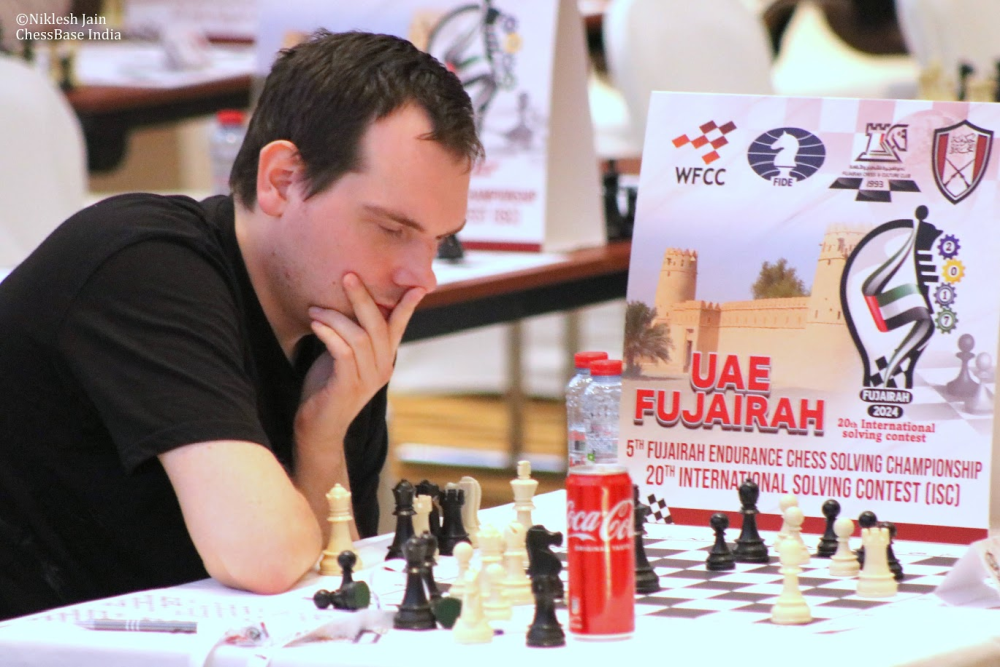

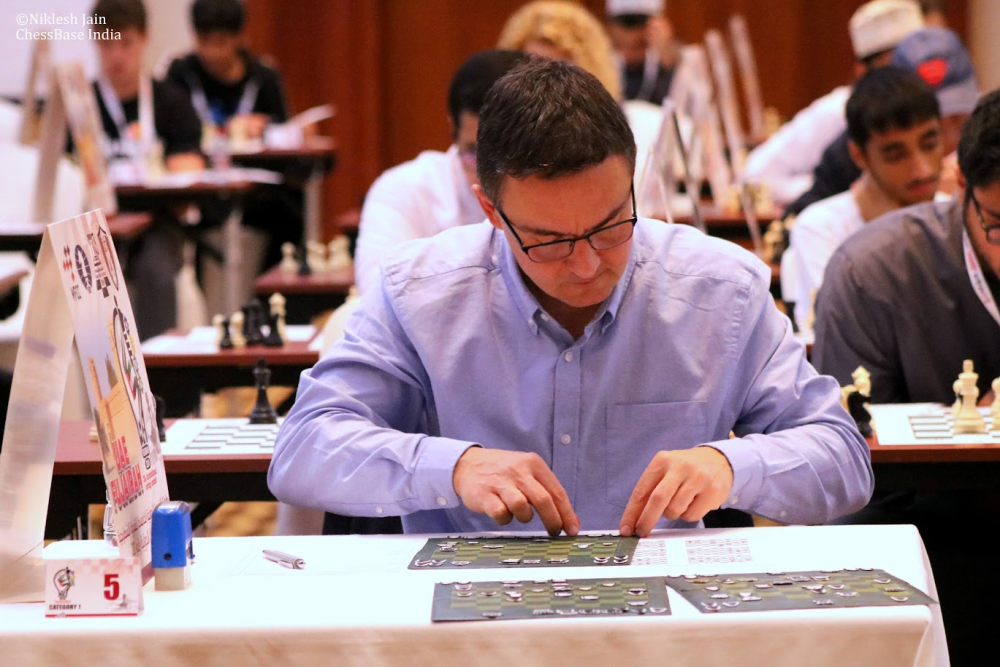
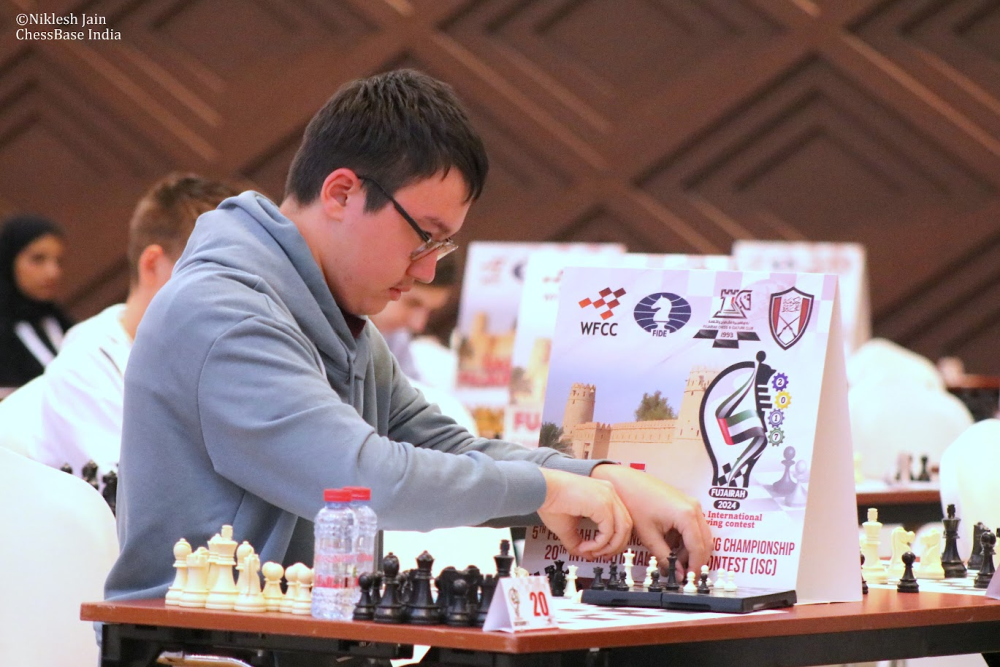
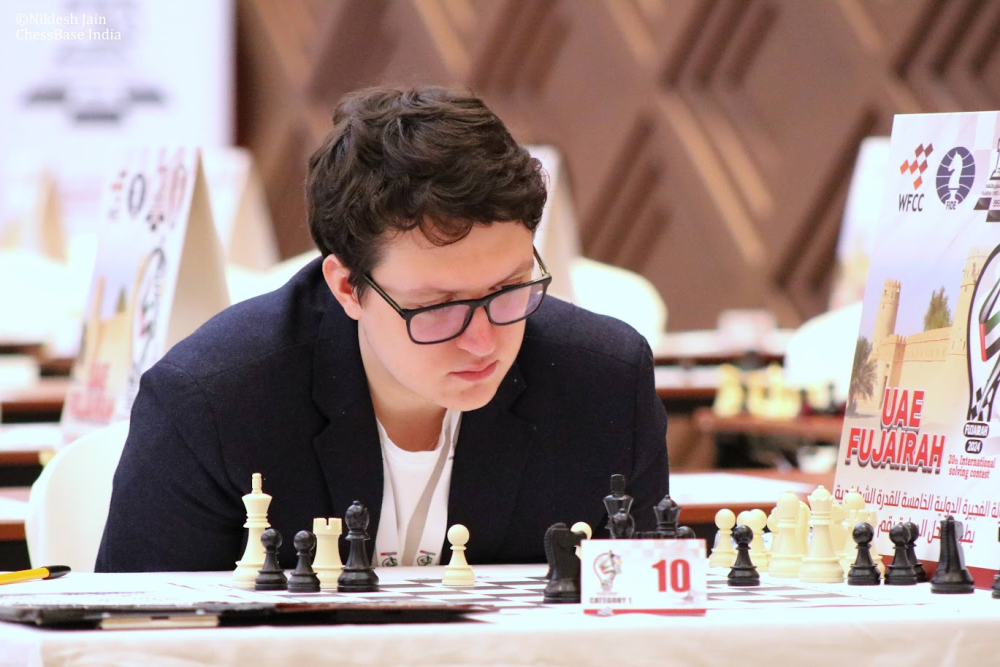
Without further ado, let us now delve into the problems posed. The competition had two rounds, each of 120-minute duration and comprising six problems: a two-mover, a three-mover, a more-mover, an endgame study, a helpmate, and a selfmate. To just give you a feel for how high the quality of the contest was, we will cover four compositions in this article—the first three from the first round and the last one from the second round.
Problem 01 - Dombrovskis Paradox!
Dmitry Nikolayevich Banny, Die Schwalbe 1984, 4th Prize
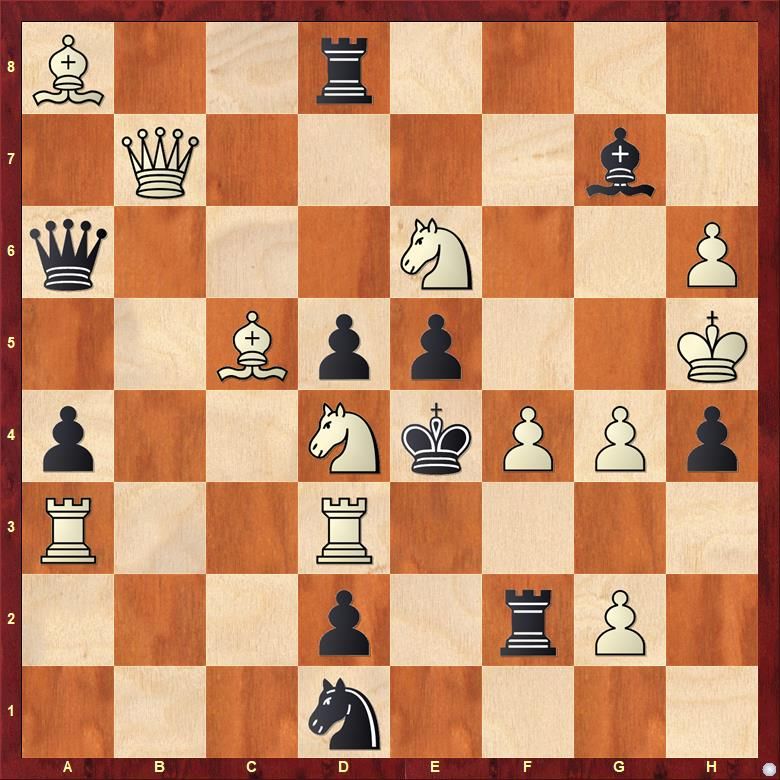
The above was the very first position in the problem sheet handed to the participants in round 1—a complex, heavyweight setup with 23 units on the board. How do you approach it? A thematic idea here is to go 1.Qb1, create a battery on the b1-e4 line, and threaten 2.Re3# (double-checkmate). This almost works. The defence 1...Qxe6 is met with 2.Rf3#. However, Black has this unique refutation: 1...Nc3!.
Another try in the position is 1.Rf3. This relieves the e6 knight from the duty of guarding the f4 square, thus threatening 2.Ng5#. Here, the defence 1...Qxe6 runs into 2.Qb1#, while 1...Bf6 or 1...Bxh6 is met with 2.Qh7# and 1...Rxf3 simply with 2.exf3#. But once again, Black has a refutation: 1...exf4!.
The key move is 1.Nf3!, threatening 2.Nfg5#. The variations are as follows: 1...Qxe6 2.Qb4#, 1...Rxf3 2.gxf3#, 1...Bf6 or Bxh6 2.Qh7#, 1...Nc3 2.Re3#, and 1...exf4 2.Neg5#. Note that the last two checkmates appeared as threats in the two tries we discussed. Here, paradoxically, they occur after the moves that refuted the tries. This paradoxical effect is known as the Dombrovskis, after the Latvian chess composer Alfreds A. Dombrovskis, who passed away in 2000.
Problem 02 - A Pair of Novotnys
Petrus Koetshied & Jan Hartong, Probleemblad 1950, 1st Prize
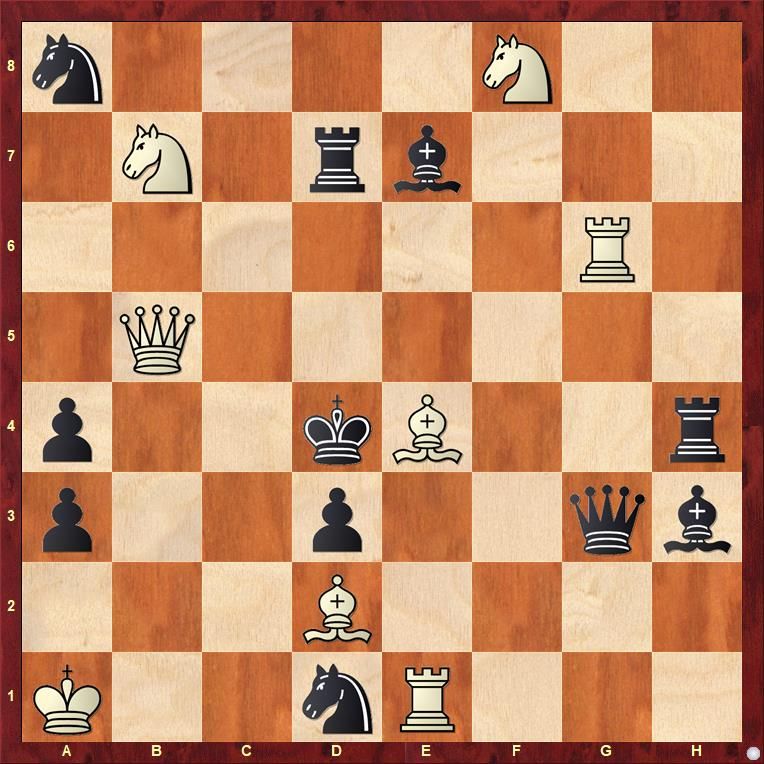
To any experienced solver, the move that immediately stands out here is 1.Rd6+. This is the Novotny sacrifice. It effects a mutual interference between Black's d7 rook and e7 bishop. If Black captures on d6 with the rook, they end up interfering with the e7 bishop's diagonal, allowing 2.Qc5#. On the other hand, taking on d6 with the bishop blocks the d7 rook, running into 2.Qd5#. But of course, Rd6+ doesn't work on move 1 due to Qxd6, suggesting that the queen on g3 first needs to be suitably deflected.
The solution begins with 1.Bf3!. This threatens 2.Qxa4+ Bb4 3.Qxb4# and, moreover, opens the possibility of a second Novotny sacrifice: Rg4+!. 1.Bf3 also blocks the black queen on the third rank so that the d1 knight must stay guard of the e3 square; hence, any other move of the e4 bishop on the h1-a8 diagonal doesn't work. A defence like 1...Nb2 or 1...Ne3, for instance, is now met with 2.B(x)e3+ Kc3 3.Rc1#. The rest of the variations are as follows:
(A) 1...Qxf3 2.Qe5+ Kc4 3.Na5#
(B) 1...Nb6 2.Qxb6+
2...Kc4 3.Na5#
2...Bc5 3.Qxc5#
(C) 1...Qxe1 (or Qd6) 2.Rd6+! (Novotny)
2...Rxd6 3.Qc5#
2...Bxd6 3.Qd5#
(D) 1...Qc7 2.Rg4+! (Novotny)
2...Bxg4 3.Re4#
2...Rxg4 3.Ne6#
2...Qf4 3.Ne6#
Problem 03 - Siers Battery
Y. Gordian / M. Maradyuk / V. Ryabtsev, Ural Problemist 2012, 1st Hon. Mention
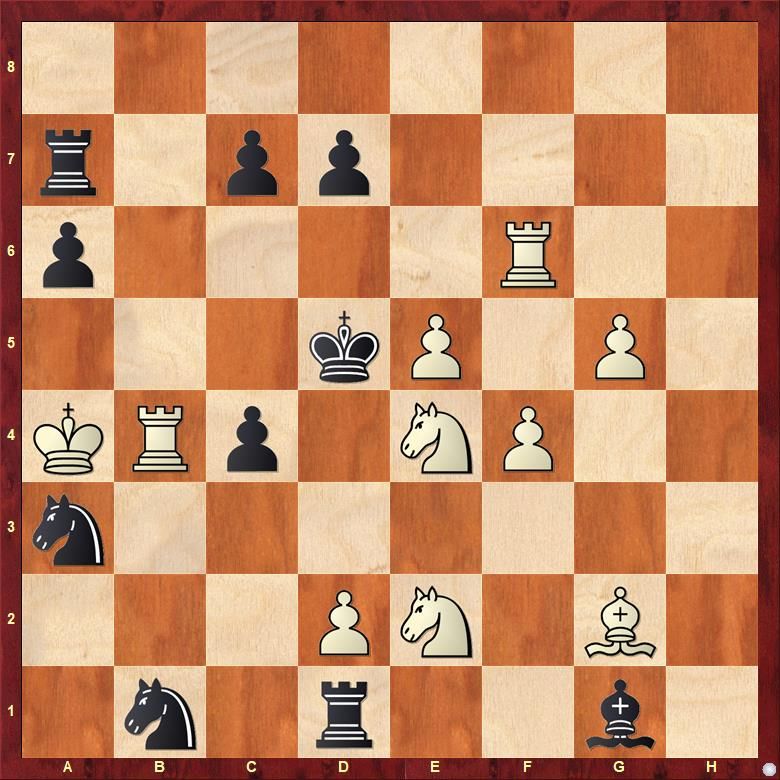
A battery is an arrangement of two pieces of the same colour on a line such that if one of the pieces moves off the line, the other delivers a discovered check to the enemy king. The arrangement on g1-d5 in the position above is a battery, and it plays a key role in the solution.
The first move is the unassuming 1.g6!, but this threatens 2.Ng5+ Kc5 3.Rc6+ dxc6 4.Ne6#. There are a couple of ways in which Black can defend, each requiring White to unleash the battery on g1-d5 in a different way. Here are the variations:
(A) 1...Nb5 2.Nd6+ Kc5 3.Rxc4+ Kb6 4.Nc8#
(B) 1...Rf1 2.Nf2+ Kc5 3.d4+ cxd3 ep. 4.Nxd3#
(C) 1...Nxd2 2.Nxd2+ Kc5 3.Rxc4+ Nxc4 4.Nb3#
(D) 1...Nc3+ 2.N4xc3+ Kc5 3.Ka5 and 4.Na4#
Specifically, in the play above, we see that the front piece (knight) that moves out of the battery line first allows the flight square c5 to the black king, and, after the black king moves there, it moves again to deliver mate. This type of battery is known as the Siers battery, after Theodor Siers, who was one of the first composers to explore it.
Problem 04 - Positional Draw
V. Anufriev, The Problemist 1998, 1st Prize
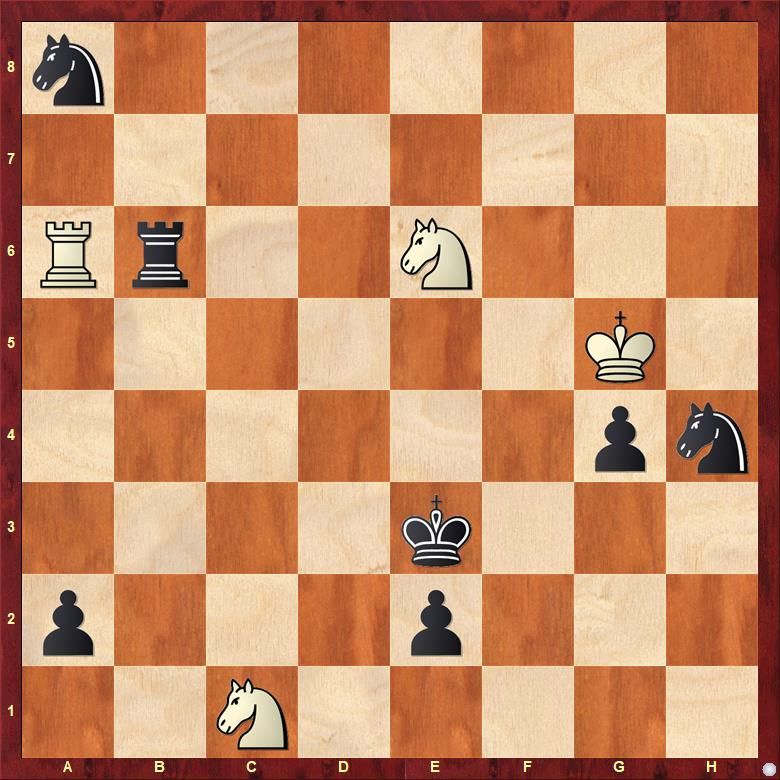
This endgame study from the second round of the event proved to be the most difficult exercise. Apart from the winner, Andrey Selivanov, no one managed to solve it fully. White's rook is en prise, and Black's pawns on a2 and e2 are on the verge of queening; the first move is not difficult to guess in view of this situation, but it gets complicated soon enough.
Solution: 1.Ra3+ Rb3
Something like 1...Kd2 is met with 2.Rxa2+ Kxc1 2.Rxe2, and the position equalises. White is out of the woods.
2.Rxb3+ Ke4
If 2...Kd2 then 3.Rb2+ Kc3 4.Nxa2+ Kxb2 5.Nf4; 2...Kf2 is simply met with 3.Ra3, where White has Nd3+ (fork) for e1=Q.
3.Nxe2 Nf3+ 4.Kxg4 Ne5+ 5.Kh5!
A clever move with the king! a1=Q is imminent; hence, White preemptively puts their monarch out of the incoming queen's field.
5...a1=Q 6.Nc5+ Kd5 7.Rb1!
The newborn queen has very few squares to go to. 7...Qxb1 or Qa2 runs into 8.Nc3+. The only safe squares for the lady are a3, a5, and a7.
7...Qa5 8.Rb5!
The queen, once again, has only three safe squares: a1, a5, and a7. And thanks to White's subtle fifth move, it also can't gain any tempo with check.
8...Qa7 9.Rb7! Qa3 10.Rb3!
The queen is stuck irremediably on the a-file! This is a positional draw. Replay the full solution below:
More Photos...
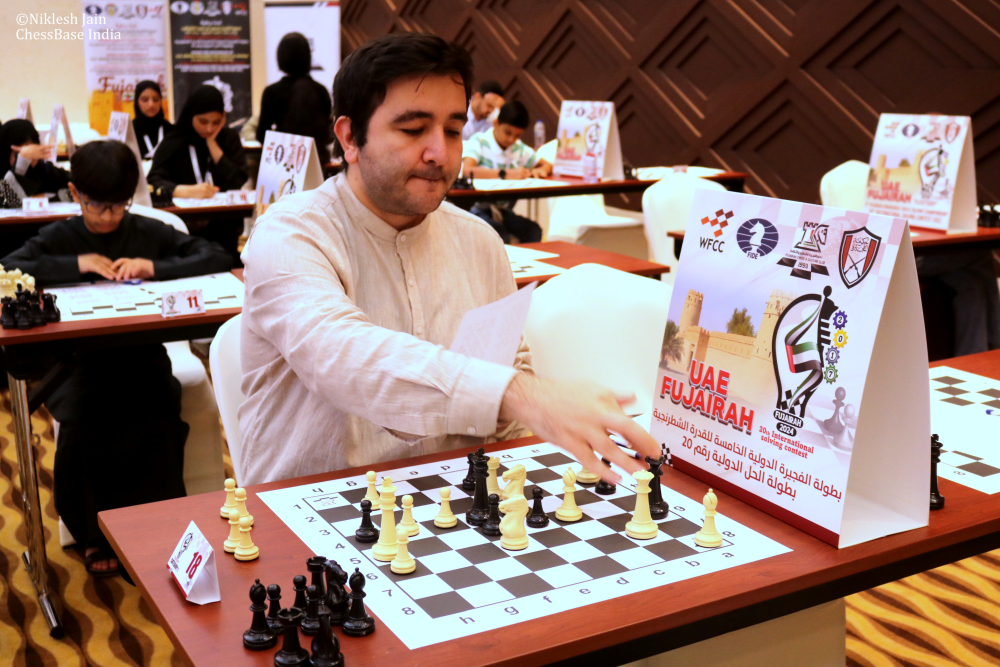
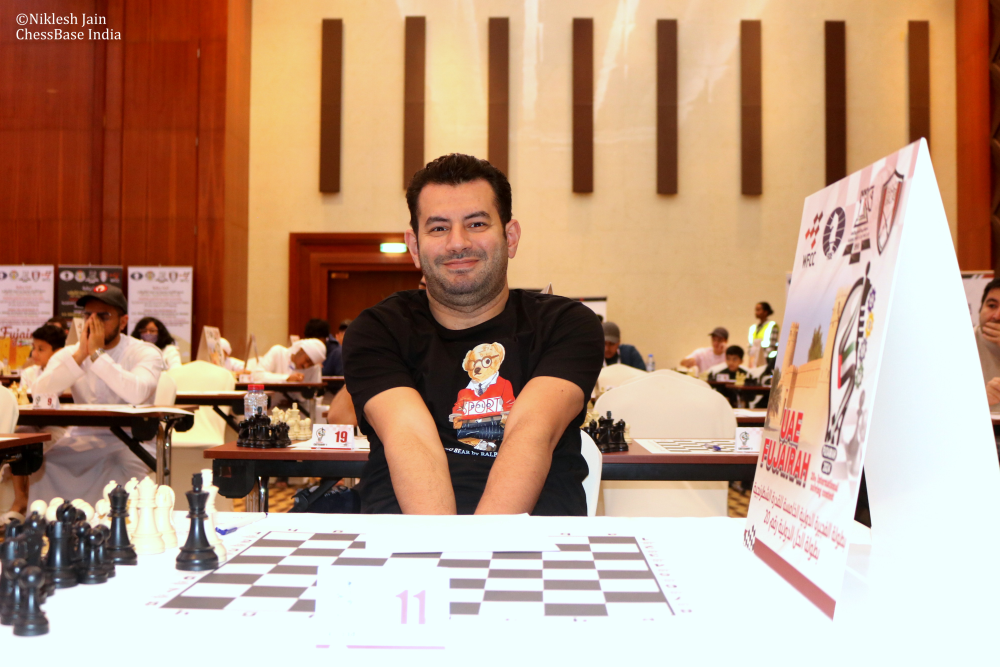
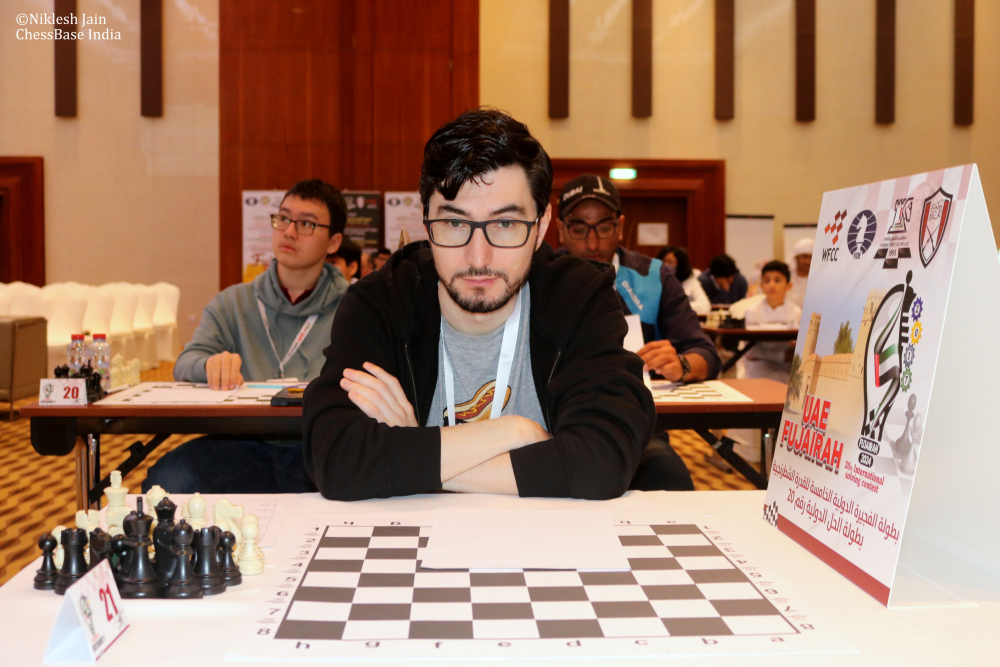
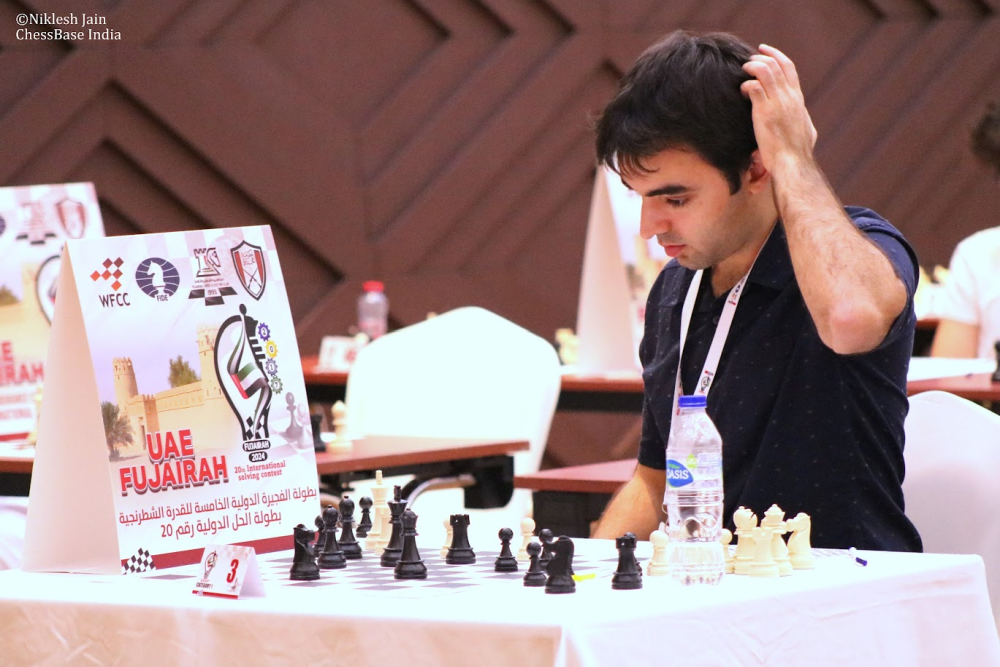





Can you solve this?
Dieter Werner, Schach, 1999
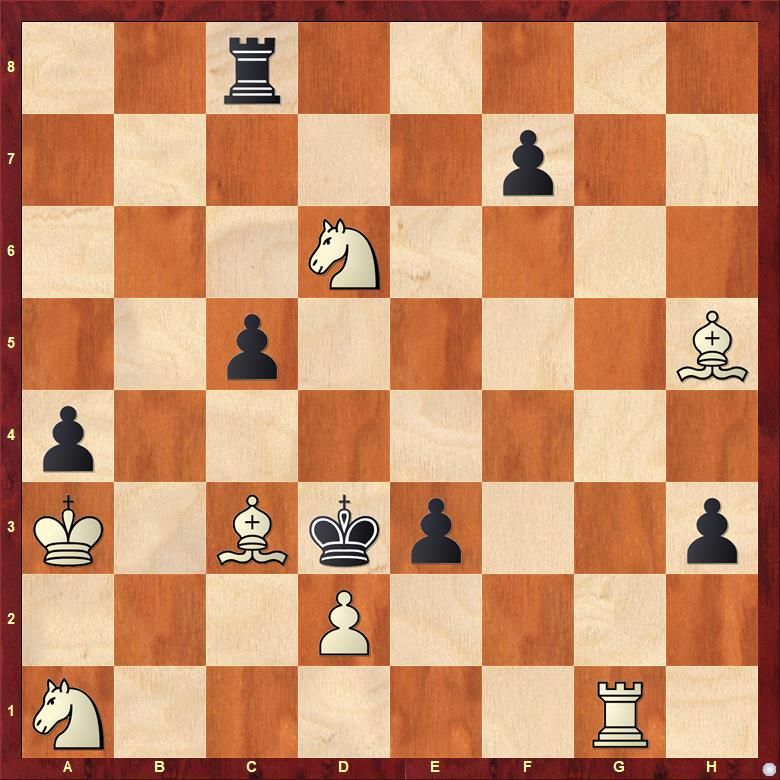
Here's a problem for you to solve from category 2 of the International Solving Contest. 1.Rg5, threatening 2.Re5# is an obvious try, but it fails to 1...f5. Can you see why? How can White circumvent the hindrance? You can either send your answers to chessbaseindiasocial@gmail.com or leave them in the comments below. Be sure to be thorough and provide all variations, not just the first move! We will update the article with the solution after a week.












































